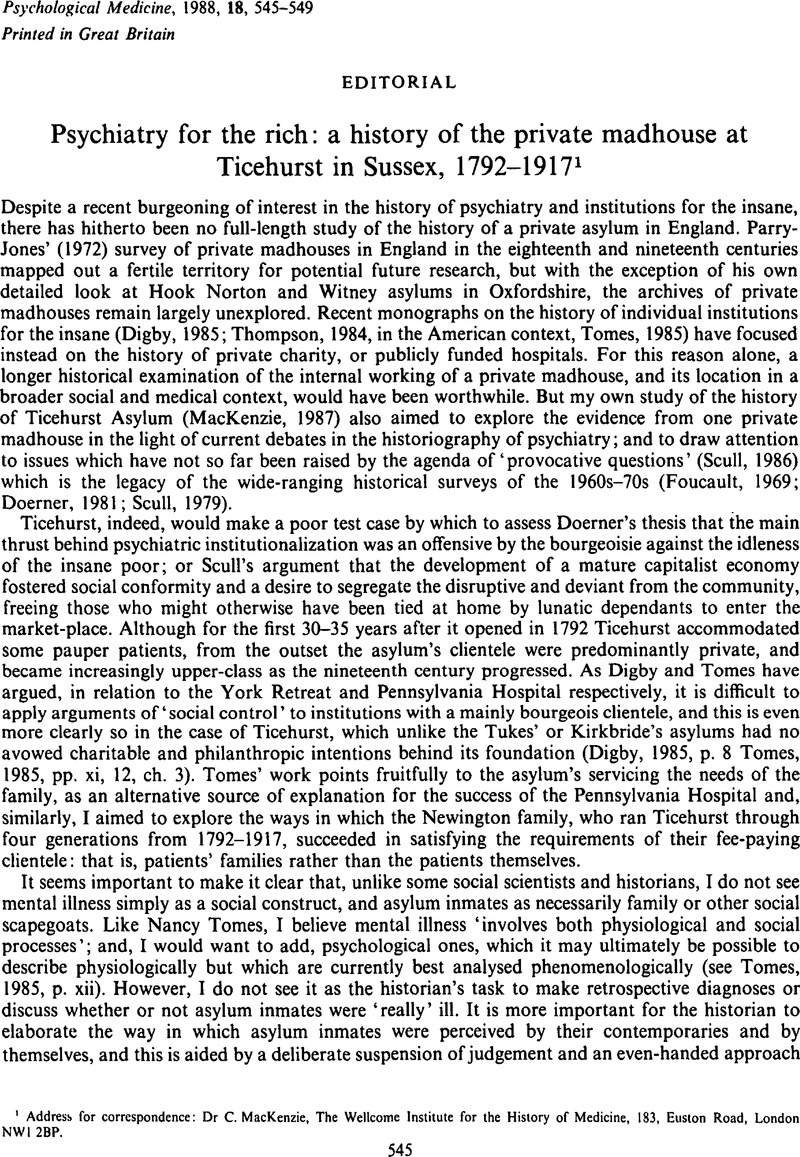Crossref Citations
This article has been cited by the following publications. This list is generated based on data provided by Crossref.
Marland, Hilary
2004.
Dangerous Motherhood.
p.
9.
Golding, Rosemary
2022.
Music as Therapy for the ‘exceptionally wealthy’ at the Nineteenth-Century Ticehurst Asylum.
Royal Musical Association Research Chronicle,
Vol. 53,
Issue. ,
p.
51.





